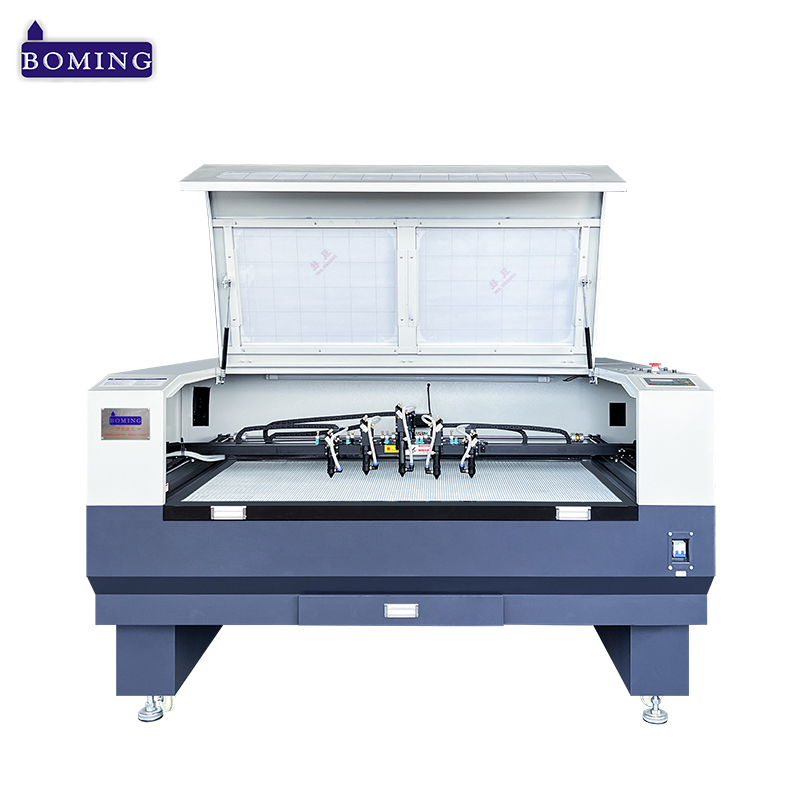what is a laser?
The word laser is a free translation of Laser, an acronym for Light Amplification by Stimulated Emission of Radiation, which means "light amplification by stimulated emission".
In 1916, physicist Albert Einstein studied and proposed the concept of optical induction absorption and induced emission (also known as stimulated absorption and stimulated emission), which later became the main physical basis of lasers.
The world's first laser was developed in 1960 by American scientist Theodore Maiman at the Hughes Laboratory in California. Laser has been translated into "laser", "optical maser", "optical stimulated radiation amplifier" and so on in China. In 1964, after the discussion at the Third Academic Conference on Optical Quantum Amplifiers, it was decided to adopt the suggestion of Academician Qian Xuesen to translate it into "laser". The translated name of "laser" can not only reflect the scientific connotation of stimulated radiation, but also indicate that it is a very strong new light source, so it has been recognized and used since then.
The wavelength of the laser is the same as that of ordinary light. The color of the laser depends on the wavelength of the laser, and the wavelength depends on the active substance that emits the laser, that is, the material that can generate the laser after being stimulated. Stimulated materials include solids, semiconductors, and gases. For example, ruby can be stimulated to produce red laser beams; argon can be stimulated to produce blue-green laser beams; semiconductors can be stimulated to emit infrared lasers, which are invisible to the naked eye; CO2 can be stimulated to emit a laser with a wavelength of 10.6 μm, which is invisible to the naked eye, and so on.
The difference between laser and ordinary light source
Laser is a collection of high-energy beams, known as the fastest knife, the most accurate ruler, and the brightest light. Compared with ordinary light sources, lasers have four characteristics.
(1) High directivity: This means that the divergence angle of the beam is small, that is, the directivity of the laser is extremely high, while the ordinary light source emits light in all directions. As shown in the picture, the light from the bulb of the flashlight is emitted in all directions. To make the emitted light propagate in one direction, it is necessary to install a certain condensing device on the light source. For example, the headlights and searchlights of automobiles are equipped with concave mirrors and convex lenses with condensing effect, so that the light is collected and emitted in one direction.

(2) High brightness: The brightness of the light source refers to the light power of the luminous unit within the range of unit solid angle in a given direction. Before the invention of the laser, the high-voltage pulsed xenon lamp had the highest brightness among artificial light sources, which was comparable to the brightness of the sun. The brightness of the laser is much higher than the brightness of the sun. For example, the brightness of the ruby laser is about 10 billion times the brightness of the sun.
(3) High monochromaticity: Since the wavelength distribution of the light output by the laser is very narrow, the color is extremely pure. For example, the wavelength distribution range of red light emitted by a helium-neon laser is in the μm level, which is two ten thousandths of the wavelength distribution range of red light emitted by a krypton lamp. It can be seen that the monochromaticity of the laser far exceeds that of any monochromatic light source.
(4) High coherence: This refers to the phase relationship of each part of the light wave. Since the laser has high directivity and high monochromaticity, the beam must form a stable phase relationship with each point during the propagation process, forming stable interference fringes.
The above four characteristics of the laser make it able to accurately focus on the focus and obtain a high power density, which is several orders of magnitude higher than the general cutting heat source. Laser processing brings high-energy quality that traditional processing does not have, so it is widely used. Among them, material processing is an important application field.
Recommendation of laser cutting machine:
